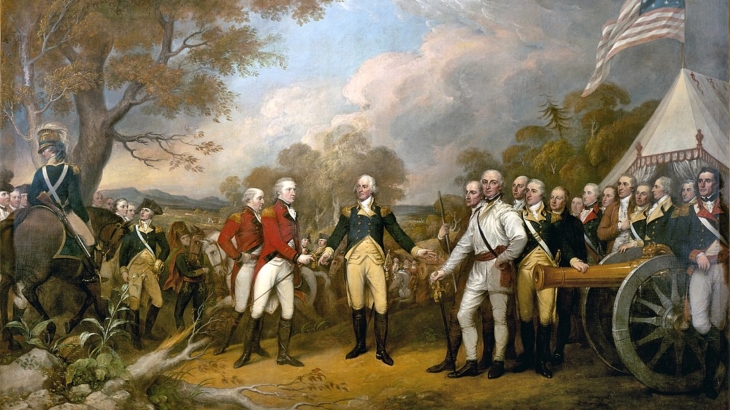“Prudence, indeed, will dictate that Governments long established should not be changed for light and transient causes; and accordingly all experience hath shewn, that mankind are more disposed to suffer, while evils are sufferable, than to right themselves by abolishing the forms to which they are accustomed.”
The above passage in the United States Declaration of Independence, warns of revolution for “light and transient causes” by overthrowing government, long established. The British Monarchy dates to 1066 when England was conquered by the Normans. And, while some monarchs were removed forcefully, the monarchs ruled England since this early beginning. The Declaration of Independence was challenging a “long established” government that ruled England for 710 years, and the members of the Second Continental Congress were aware there would be challenges in forming a new nation.
The American revolutionary leaders included many well-educated, wealthy, businessmen. They all realized signing this document would be signing their death sentences if the revolution was unsuccessful. Plus, their links to England were not casual, but well embedded in colonial life. Family, customs, education, language, business, and even religion were long-term bonds between the colonies and England. But, actions by England had become insufferable.
The Founders of America did not necessarily want to change the whole world, even though they did, but after years of insufferable treatment by King George, his government and military, they believed they had to attempt to throw off the “forms to which they are accustomed.” The Founders pulled material from many different sources to form a new government, but they didn’t necessarily have all the answers to form a successful government to replace the British monarchy.
The initial Articles of Confederation were deemed inadequate by 1785, just two years after the end of the Revolutionary War. In 1786, Congress met and debated the Constitution of the United States. While the Constitution was deemed immensely superior to the Articles of Confederation, several states refused to ratify the new Constitution without additional assurances which produced the first ten amendments, referred to as the Bill of Rights.
The Constitution of the United States is an incredible document. It has survived over 230 years and after the original ten amendments, only 17 additional amendments have been approved, fewer than one every 13 years. Through the election of Representatives, Senators, and the President and Vice-President, this document permits peaceful change in our government via elections every two, four, and six years. Most of these “mini-revolutions” have been peaceful. However, the history of change in the United States has not always been peaceful.
The U.S. Civil War was about drastically different visions of government, society, and treatment of people. While these may not have been viewed as “light and transient causes,” the impacts were devastating to the entire country. The U.S. Civil War lasted over four years from April 12, 1861 to May 9, 1865 and cost over 655,000 lives. It ended with massive changes and new amendments to the Constitution. The U.S. Revolutionary War, by contrast, resulted in approximately 25,000 American deaths and approximately 50,000 in total.
In 1968, the United States was in turmoil during a presidential election year with a war in Viet Nam, riots at home, the assassination of two prominent national leaders: one a civil rights leader and another a presidential candidate. During this chaos, a British pop music group, the Beatles, released a song called “Revolution” in August with lyrics to demand change while casting aside violence or destruction. The line from the song, “we all want to change the world” still resonates today as it did over 200 years ago.
Many individuals, organizations, and political groups over the history of the United States have pushed for change in our country, some minor, some drastic. Change is inevitable, but the Founders of the United States left a cautionary note in the Declaration of Independence, one hopefully taken to heart by both those wanting change and those resistant to change.
 David L. Robbins serves as Public Education Commissioner in New Mexico.
David L. Robbins serves as Public Education Commissioner in New Mexico.

Podcast by Maureen Quinn



